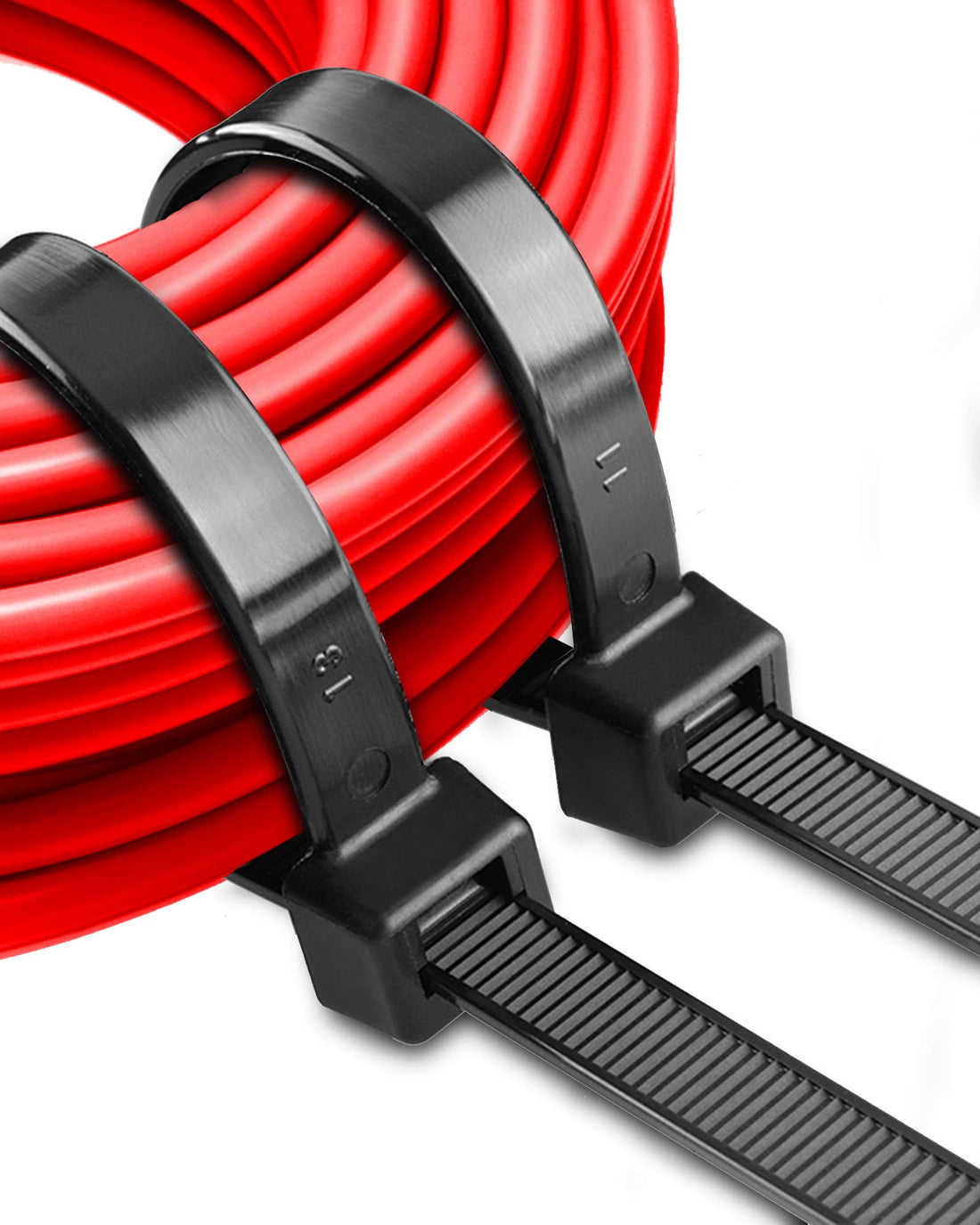
Mastering Zip Tie Locking Mechanisms: A Comprehensive Guide
Share
Zip ties, also known as cable ties, are indispensable tools in various industries and applications. They provide a simple yet effective solution for bundling, securing, and organizing items. One of the critical components that determine the effectiveness of a zip tie is its locking mechanism. In this blog post, we will delve into the different types of zip tie locking mechanisms, their design and functionality, the materials used, and their applications. We will also highlight the quality and innovation behind the locking mechanisms of Elite Zip Ties.
What is a Locking Mechanism in Zip Ties?
The locking mechanism in zip ties is the part that secures the tie in place once it has been tightened. It ensures that the zip tie remains in position and does not loosen over time, providing a reliable and secure hold. A robust locking mechanism is essential for the performance and safety of zip ties, especially in critical applications.
Types of Locking Mechanisms
Self-Locking Mechanism
The self-locking mechanism is the most common type of locking mechanism found in zip ties. It consists of a ratchet-and-pawl design that allows the tie to be tightened but not loosened. Once the tail of the zip tie is pulled through the head, the pawl engages with the teeth on the tail, securing it in place. This type of mechanism is ideal for single-use applications where a permanent hold is required.
Releasable Mechanism
Releasable zip ties feature a locking mechanism that can be disengaged, allowing the tie to be reused. These ties have a tab or lever that, when pressed, releases the pawl from the teeth, enabling the tie to be loosened and removed. Releasable zip ties are perfect for applications where temporary fastening is needed, or adjustments may be required.
Metal Tooth Locking Mechanism
Metal tooth locking mechanisms incorporate a metal insert within the head of the zip tie. The metal tooth bites into the tail, providing an exceptionally strong hold. This type of mechanism is commonly used in heavy-duty applications where high tensile strength is necessary.
Design and Functionality
Standard Self-Locking Mechanism
The standard self-locking mechanism is designed to provide a secure and reliable hold. The ratchet-and-pawl system ensures that once the tie is tightened, it cannot be loosened unless cut. This design is simple yet effective, making it suitable for a wide range of applications.
Releasable Mechanism
Releasable mechanisms are designed with a tab or lever that allows the user to disengage the pawl from the teeth. This feature makes the tie reusable and adjustable, offering flexibility in applications where changes may be needed.
Metal Tooth Mechanism
The metal tooth mechanism is designed for maximum strength. The metal insert provides a more substantial grip compared to plastic teeth, ensuring the tie remains secure even under heavy loads. This design is particularly beneficial in industrial and construction settings.
Material and Durability
Zip tie locking mechanisms are typically made from high-quality materials such as Nylon 6/6 and stainless steel. Nylon 6/6 is known for its excellent strength, durability, and resistance to chemicals and UV radiation. Stainless steel offers superior tensile strength and corrosion resistance, making it ideal for harsh environments.
At Elite Zip Ties, we use premium Nylon 6/6 for our zip ties, ensuring they provide long-lasting performance even in demanding conditions. The use of high-quality materials enhances the durability and reliability of the locking mechanism, providing peace of mind in critical applications.
Applications and Benefits
Home and Office Use
Self-locking zip ties are perfect for organizing cables and wires in home and office settings. They provide a neat and tidy solution, preventing tangles and reducing trip hazards.
Construction and Industrial Use
Heavy-duty zip ties with metal tooth locking mechanisms are ideal for securing materials and equipment in construction and industrial environments. Their high tensile strength ensures they can handle heavy loads without breaking.
Automotive Repairs
Releasable zip ties are beneficial in automotive repairs, where temporary fastening may be needed. They allow for adjustments and repositioning, making them versatile tools in the garage.
Gardening and Outdoor Projects
UV-resistant zip ties with robust locking mechanisms are perfect for outdoor use. They can withstand exposure to sunlight and harsh weather conditions, making them ideal for gardening and outdoor projects.
Quality and Innovation at Elite Zip Ties
At Elite Zip Ties, we are committed to providing high-quality products with innovative designs. Our zip ties undergo rigorous testing to ensure they meet the highest standards of performance and reliability. We continuously explore new technologies and materials to enhance the design of our locking mechanisms, providing our customers with the best possible products.
Comparisons
Elite Zip Ties' locking mechanisms are designed to outperform those of our competitors. Our use of premium materials, combined with innovative designs, ensures our zip ties provide superior performance in all applications. Whether you need self-locking, releasable, or metal tooth zip ties, our products offer unique features and competitive advantages that set them apart.
Practical Tips
Choosing the Right Zip Tie
When selecting a zip tie, consider the application and the required tensile strength. For permanent holds, self-locking zip ties are ideal. If adjustments are needed, opt for releasable zip ties. For heavy-duty applications, choose zip ties with metal tooth locking mechanisms.
Best Practices
Ensure the zip tie is correctly positioned and tightened to provide a secure hold. Avoid overtightening, as this can damage the tie and reduce its effectiveness. Use the appropriate length and tensile strength for the task to ensure optimal performance.
Common Mistakes to Avoid
- Using zip ties with insufficient tensile strength for the application
- Overtightening the zip tie, causing it to break or fail
- Not using UV-resistant zip ties for outdoor applications, leading to degradation over time
Customer Testimonials
Our customers have consistently praised the quality and performance of Elite Zip Ties. Here are a few testimonials highlighting the effectiveness of our locking mechanisms:
"I've been using Elite Zip Ties for my construction projects, and their metal tooth locking mechanism is unmatched. These ties hold up under heavy loads and harsh conditions." - John D.
"The releasable zip ties from Elite Zip Ties are perfect for my automotive repairs. I can make adjustments easily, and they provide a strong hold every time." - Sarah T.
Conclusion
A reliable locking mechanism is crucial for the performance and safety of zip ties. Understanding the different types of locking mechanisms, their design, and the materials used can help you choose the right zip ties for your needs. At Elite Zip Ties, we are committed to providing high-quality products with innovative designs, ensuring you get the best possible performance in every application.
For more information and to explore our range of high-quality zip ties, visit our website today!
